Medial, vertical fracture: lag screw through buttress plate
1. Principles
As the thread advances within the main body of the tibia, the head pushes the medial fragment towards the tibia.
The smooth shaft of the screw prevents any significant hold between itself and the surrounding bone.
The length of the screw shaft must be chosen so that the threaded part of the screw lies fully beyond the fracture line.
The function of a buttress plate is to neutralize any vertical shearing force.

2. Reduction
Cleaning the fracture site
It is important to visualize and inspect the joint, searching for bone and cartilage fragments detached from the medial malleolus or from the talus, and any impaction of the articular surface at the margin of the fracture. If the articular surface has been impacted, this must carefully disimpacted before the medial fragment is reduced.
Anatomical reduction
Reduce the fracture anatomically with the use of small pointed reduction forceps taking care with the soft tissues.
Depending on fracture configuration and size of the fragment, the use of large pointed reduction forceps through a lateral stab incision may be necessary.
Do not strip the periosteum more than necessary.
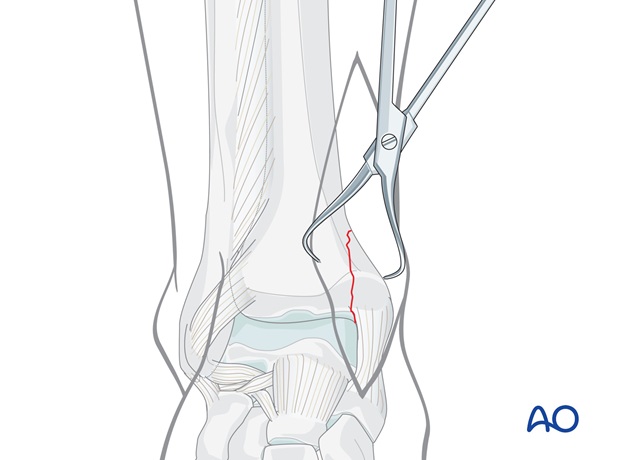
In the presence of an impacted medial corner fragment, gently open the main vertical fracture plane by retraction of the medial malleolus medially (opening the book). The impacted “corner” fragment, usually identifiable by its articular cartilage, after irrigation if necessary, can then be seen.
Disimpact and carefully tease back the fragment into its anatomical position.
Then close the book by careful reduction of the medial malleolus.
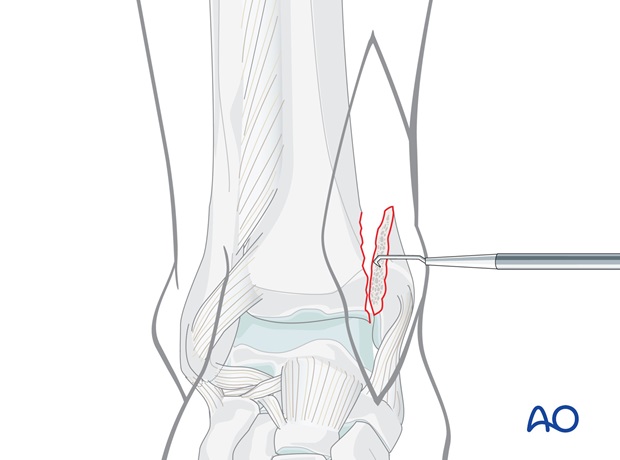
Preliminary fixation
Insert two 1.6 mm K-wires as perpendicularly as possible to the fracture plane, about 1 cm proximal to the level of the horizontal tibiotalar joint line.
As decided in preoperative planning, these K-wires should be inserted anterior and posterior in order not to interfere with the planned position of the plate.
Check the reduction under image intensification.
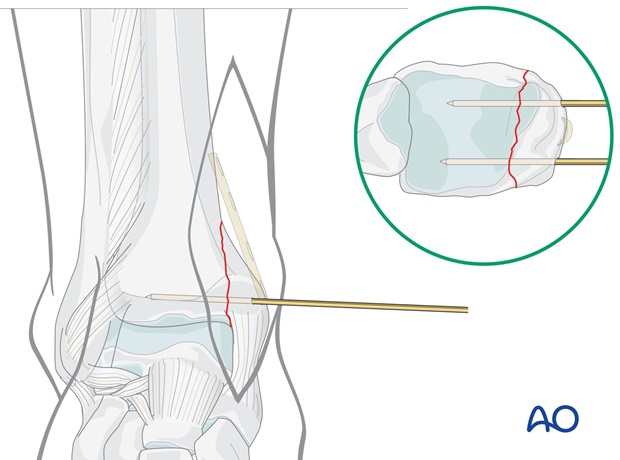
3. Fixation
Plate position
Position a four-hole, one-third tubular plate firmly by hand so that two holes lie superior and two holes lie inferior to the fracture line. Plan to position the first proximal screw near the fracture.
This screw must be located in the tibia, 3 mm proximal to the apex of the fracture.
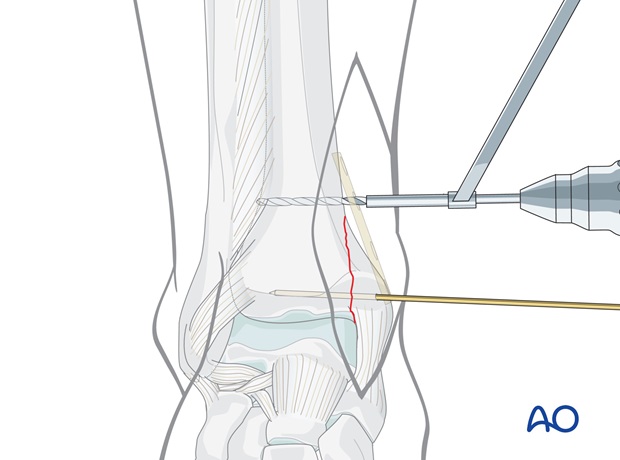
Insertion of the proximal screws
Use the 2.5 mm drill bit and protection sleeve. Drill both cortices, but exercise great care not to overpenetrate laterally.
Measure the depth and tap both cortices with the 3.5 mm tap, using the protection sleeve.
Carefully apply the uncontoured plate and insert the first cortex screw. By tightening the screw, the plate will act as a buttress on the distal fragment.
Insert the second proximal 3.5 mm cortex screw as described above.
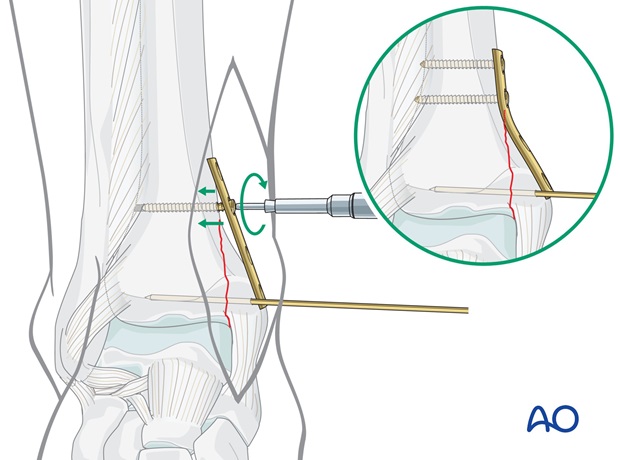
Insertion of the distal lag screws
With the protection of the drill sleeve, drill a 2.5 mm hole as perpendicularly as possible to the fracture plane. Do not drill the far cortex.
Care must be taken to avoid penetration of the ankle joint.
Measure the drill depth and then tap the medial cortex only with the 4.0 mm cancellous bone tap using the protection sleeve.
The 4.0 mm cancellous bone screw to be inserted should come to rest with its threads completely beyond the fracture line.
Insert the second lag screw in the same manner as described above.














